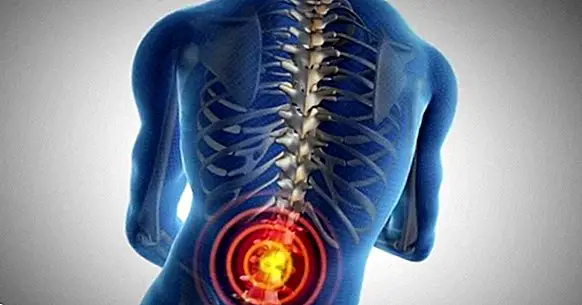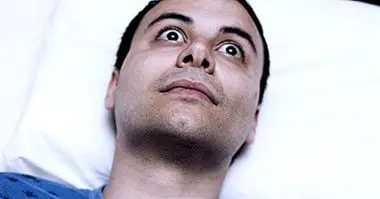Psychosomatic disorders: causes, symptoms and treatment
You've probably heard on occasion that a person's tension has gone up or that their hair is falling out due to anxiety. In these cases, it is considered that a mental phenomenon is the cause of a real physiological phenomenon .
These examples do not seem very important in terms of health, but in other cases more severe illnesses can be found, causing pain or discomfort or even incapacitating in some vital domain for the subject. Here we would be talking about a psychosomatic disorder .
- Related article: "The 18 types of mental illnesses"
When the disease is caused by the mind
Psychosomatic disorder means any disorder with a visible and medically verifiable correlate in the body that is caused and / or potentiated by psychic or mental elements. In other words, psychosomatic means any situation in which mental processes have a direct, concrete and easy to define on one or more areas of the body.
This means that there is no single psychosomatic disorder, but there is a wide variety of them depending on the type of physical symptoms and the system of the organism that presents damages.
The causes of this type of disorder are as we have said mentally, but there is no single process by which they are formed. In general they suppose the existence of a stress, anxiety, frustration or mental discomfort persistent over time, causing constant suffering, responding the body physically and causing real damage to him. Generally the damage is caused by the continued release of adrenaline and cortisol or the presence of deficits or excesses in the normal emission of neurotransmitters and hormones.
Disorders generated or accentuated by the psyche
Psychosomatic disorders are many and varied, and may affect different systems such as endocrine, cardiovascular, respiratory, digestive or immune.
Some of the main disorders that can occur or be aggravated largely due to psychic causes are the following.
- Cardiopathies: angina pectoris, myocardial infarction.
- Vascular alterations : arterial hypertension.
- Pneumopathies: asthma.
- Gastrointestinal disorders: peptic ulcer, irritable colitis colitis syndrome.
- Metabolic disorders: diabetes mellitus.
- Genitourinary: dysmenorrhea, polyuria.
- Dermopathies : acne, eczema
- Immunopathies: cancer, infectious diseases.
Differences between somatoform and psychosomatic disorders
Psychosomatic and somatoform disorders are often confused . However, we are facing different types of disorder, because despite agreeing on different fundamental and defining aspects, there is a main difference.
This difference is that while in somatoform disorders the patient suffers a series of symptoms of a physical or physiological type but that nevertheless do not have a physiological correlate in the form of tissue damage, in psychosomatic disorders there is visible and detectable damage in the body.
Thus, the main difference is that in psychosomatic disorders there is an organic damage or real physical illness while in the somatomorphs these are not visible , although in both cases there are symptoms of them and that also in both cases the problem is caused or potentiated by a psychic phenomenon.
- Maybe you're interested: "Factitious Disorders: symptoms, causes and treatment"
Treatment of psychosomatic disorder
The treatment of psychosomatic disorders can be complex, and to achieve this it is necessary to have the participation of a multidisciplinary team, being especially necessary the participation of specialists in medicine and in psychology .
In general, the type of treatment will vary greatly depending on the type of pathology that is generated or enhanced. For example, an ulcer will have a different treatment than dysmenorrhea or an angina pectoris or an arrhythmia.
Pharmacological and medical intervention
At the pharmacological and medical level, the treatment will focus first on treating the presented symptomatology and the tissue damage from which it is derived. Given that anxiety and mood are linked to this type of disorders, the treatment of these aspects at the pharmacological level can also be very useful, although in this aspect the drugs usually have only a temporary effect and may reappear symptoms .
Psychological intervention
At a psychological level, it is basic that the patient is able to express the psychic motive for which he or she generates the symptoms, which will require the use of techniques dedicated to this purpose.It is recommended the use of those techniques used in the treatment of anxiety, stress and depression. In addition, it must take into account the type of condition generated and the effects that its existence may have psychically on the patient.
The realization of different relaxation techniques, the problem solving technique, the learning of different methods to tolerate and manage stress and anxiety, and even training in social skills (in cases where anxiety is exacerbated by a deficit) in this kind of skills), Cognitive restructuring in order to modify dysfunctional beliefs , systematic desensitization or psychodrama can be very helpful in order to improve the symptomatology.
The use of theatricalization in the form of role-playing, modeling or psychodrama is an element to be taken into account and can greatly contribute to the improvement of symptoms by allowing the subject to express or even become aware of the origin of his illness or the reason why it has been enhanced.
Also, the performance of moderate physical exercise (depending on the case, since if there is coronary disease, caution should be exercised in this aspect), the expression of conflicts or even elements such as aromatherapy can also be useful for this type of patient.
Bibliographic references:
- American Psychiatric Association. (2013). Diagnostic and Statistical Manual of Mental Disorders. Fifth edition. DSM-V. Masson, Barcelona.
- Bruceta, J.M .; Well, A.M .; More, B. (2000). Psychological intervention in health disorders. Dykinson.
- Sandín, B. (1993). Stress and Health: Factors that intervene in the relationship between stress and physical illness. Madrid: Pyramid.



















